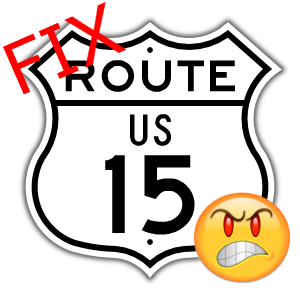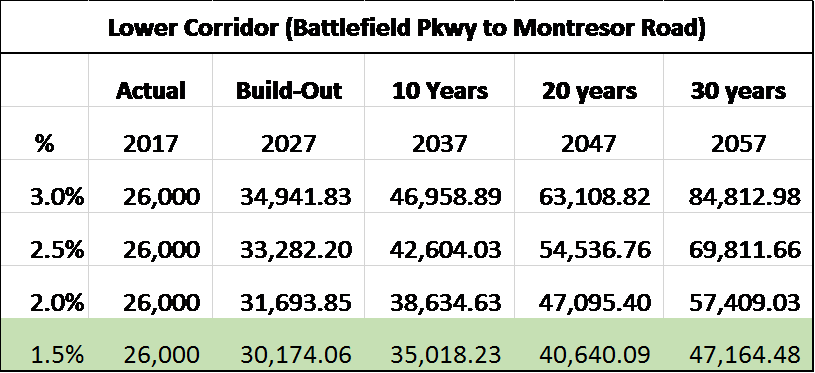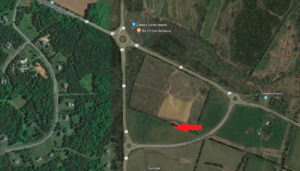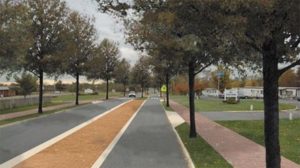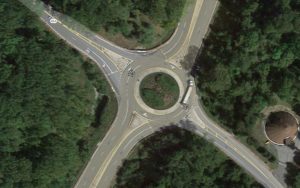One of the key refrains that we all hear from the various special interest groups trying to block Route 15 safety and congestion relief improvements is that they are representing the views of the community at large against the heavy-handed tactics of VDOT. They hold themselves up as the voice of the citizens against outside forces trying to ruin our road. Today we examine the accuracy of that statement. You can judge for yourself whether or not these groups are being given more influence by our County officials than they deserve.
We begin with a bit of data. Back in early May of 2018, in advance of the May 10th Northern Virginia Transportation Authority (NVTA) public hearing and June 14, 2018 vote to grant funding for the Route 15 widening project, the County released a public survey link inviting comments with submission possible in-person at the NVTA meeting as well as via email and through the NVTA website. NVTA staff removed the anonymous comments in order to prevent “ballot stuffing”. What remains are 224 Route 15 related comments attributable to unique individuals. You can read them here:
NVTA Public Comments - Route 15 Project Comments_Clean
Here are the facts:
Out of 224 public comments, 196 comments or 87.5% were IN FAVOR of widening. Here is a selection of their statements:
“With only a single lane in both directions, this is a dangerous stretch of highway with multiple recent fatalities. The amount of time I have to allot for traffic every single day for a 4 mile stretch is seriously affecting our quality of life. I can’t even commit to certain school activities with my kids because of traffic logistics. Finally, my oldest child will be driving in 6 years – with 3 more to follow. Please help keep her safe – and every other Loudoun County resident safe – by addressing this problem now!”
“I am writing to request the NVTA fully fund widening of Rt 15 in Loudoun County. As a resident of Lucketts, Virginia, Rt 15 is our ONLY main artery outside of our neighborhoods. Widening would alleviate congestion which is a safety concern. With the increase in development in Frederick, MD, we have seen a large increase in commuter traffic (MD commuters who don’t pay taxes for Rt 15) and tractor trailers. Our elementary school is located very close to Rt 15 and the increase in traffic and congestion is dangerous for our children. Due to overcrowding in our elementary school, Loudoun County Public Schools will be bussing a class of our 5 & 6 year olds south on Rt 15 to attend another school. This 8 mile drive can take up to an hour due to congestion causing them to miss instruction. Our Middle School has to change their bell schedule to accommodate our students due to the congestion on Rt 15. They have clubs during the school day rather than after school so that our students can participate and not have to sit in hours of traffic to go 8 miles. This impacts students beyond our community and limits educational opportunities. Emergency Vehicles have difficulty getting through with congestion and the lack of shoulder in many sections of Rt 15. Our gravel side roads are seeing more traffic due to gps apps. There are days that both Rt 15 and Stumptown Road are backed up which means we are trapped. Our locally owned small businesses are negatively impacted by the congestion because it hinders access for their customers. Our entire lives are dictated by the traffic on Rt 15. To be ahead of traffic every day, I have to be past the Battlefield merge by 2:15 pm. My children get off the school bus at 2:50. Unless NVTA is willing to build another bridge at Rt 28, widening Rt 15 to Montresor is necessary for the residents along the corridor.”
“I would like to see full funding to the Rt 15 project in Northern VA. As I am writing this, there has been another dangerous accident on the road in our community. The traffic is unbearable and the road is dangerous. I put my family in danger every time I drive on this road. My small children are in danger when we go to the grocery store or even 2 miles to their elementary school. Rt 15 has become major transportation route for commuters from Maryland. They are now learning how to use our neighborhood streets to cut through to avoid traffic. It won’t be long before they are clogged up too. Please consider fully funding this important project. Our safety and the safety of our children is at stake”
“I hope your weeks are going well! I am writing as a concerned father of 3 daughters about the need to widen Route 15. In its current state, first responders (Paramedics, Fire/Rescue, Police) are unable to traverse the corridor in a timely fashion. If there was an urgent medical need in our Village Green neighborhood (~1,200 residents) it could take upward of 30 minutes for them to reach us. Secondly, there is a safety concern with continued accidents, fatal head-on collisions and road rage, which occurs as a byproduct of Route 15’s current state. When those instances happen, first responders are also hard pressed to reach the impacted people in a timely fashion. Our children that are attending Smarts Mill Middle School and Tuscarora High school sit on the bus up to 1 hour each way, 3 out of 5 days a week. The congestion also forces people to use their navigation systems to find alternate routes to traverse, which forces thousands of cars speeding through neighborhoods (a risk to our children’s safety) and through Loudoun’s historical areas (e.g. Waterford, etc.) each week. Lastly the severe traffic congestion impacts our home prices and our quality of life in Loudoun County. I urge you to seriously consider approving funds for the widening of Route 15 to help save lives and make it safe for our future generations.”
Out of 224 public comments, only 28 were AGAINST widening. Here is a selection of their statements:
“We are strongly opposing this project. We are hoping Leesburg can remain a small rural town, with its cute charm of downtown area, parks, and local businesses, and avoid becoming another DC satellite with highway cutting thru:((“
“No to 4 laning Rt 15 North which would negatively effect The Journey Through Hallowed Ground and create a more dangerous rd and even higher volume of traffic.”
“Not sure if I already submitted a comment here, but getting tired of Raspberry falls and other wealthy neighborhood development activists asking to lobby for Route 15 widening project. So here you go: My family is AGAINST this project. – There is no safety concerns with the current route. – There are plenty of other roads that are in much worse condition. – For Raspberry falls activists – it’s all about improving their commute, so that they can resell their houses at higher price.”
“I favor a solution that will minimize disruption and land loss for those of us who actually live along Route 15 and one which will help to discourage these out of state commuters, by making the use of Route 15 less attractive. Frequent traffic lights and/or stop signs and ideally, a toll at some point before the Point of Rocks bridge would be a better solution. Additionally, many of the local residents clamoring for widening the road are those who live in the Selma and Raspberry Falls developments. These communities are already at odds with the rural nature of the Lucketts region. The last thing our region needs or wants is the potential for new developments to spring up and demand additional widening of Route 15”
Conclusions
What we have here is nearly 90% of the public begging our elected representatives to widen the road in order to mitigate the Route 15 safety and congestion nightmare that affects our lives on a daily basis. The 10% opposed are either concerned with future development, don’t think there is a problem in the first place, or are upset that supposedly “wealthy” people in newer developments exist at all. They will try to deny this, but their comments prove otherwise. Don’t believe us, read it for yourselves.
Do you think this very vocal 10% is being favored by our elected representatives and allowed to delay progress by pretending to represent a more popular opinion than it really is? If so, GET INVOLVED. Let YOUR representatives know that you will not stand for further delay tactics by a tiny minority of citizens looking out for their own self interests.
Now, you may be asking yourself, who DO these special interest groups represent? Stay tuned, we have a series of articles exposing the views and tactics being used by the special interest groups, including related national organizations.
FIX ROUTE 15 NOW!
